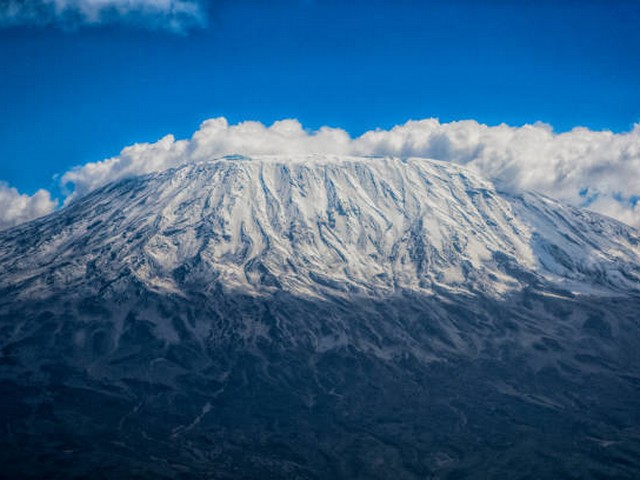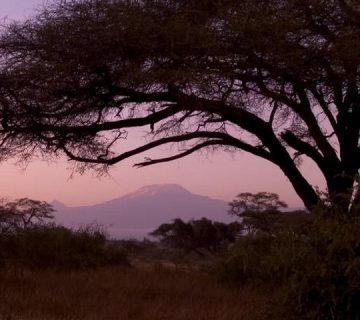Filming A Kilimanjaro Trek: Tips For Adventure Travellers
Mount Kilimanjaro, the roof of Africa, stands majestically above the Tanzanian landscape, beckoning adventurers and filmmakers alike with its snowy peak and stunning vistas. For those who aspire to capture the essence of this epic climb on camera, there’s more to consider than just the technical challenges. Whether you’re a seasoned videographer or a passionate traveler itching to document your journey, this adventure is about intertwining the spirit of exploration with the art of storytelling. At Kilimanjaro Centre For Trekking and Ecotourism (KCTE), we understand the magnetic pull of Kilimanjaro and the unique challenges it presents to filmmakers. This guide offers invaluable insights to help you immortalize your trek up this iconic mountain.
Preparing for Your Cinematic Journey
Choosing the Right Equipment
When it comes to filming on Kilimanjaro, the key is to balance quality with portability. High-definition action cameras, like GoPros, are popular for their ruggedness and ability to attach to gear, giving a first-person viewpoint of the trek. Mirrorless cameras provide excellent video quality without the bulk of traditional DSLRs. Remember, every extra ounce counts when you’re scaling heights above 19,000 feet! Also, invest in extra batteries, as cold weather can drain them faster than usual.
Understanding Kilimanjaro’s Unique Conditions
Kilimanjaro’s diverse ecosystems—from rainforest to alpine desert—pose distinct lighting and weather challenges. Familiarize yourself with your camera’s settings for varied lighting conditions. Waterproof cases or bags are essential to protect your gear from rain and dust. Also, consider a lightweight tripod for stable shots, especially during those breathtaking Kilimanjaro sunrises and sunsets.
Capturing the Heart of Kilimanjaro
Telling a Story Through Your Lens
Your trek is more than just a climb; it’s a journey through layers of natural beauty and cultural richness. Capture wide shots to depict the vastness of the landscapes. Film interactions with your guides and fellow climbers to add a human element to the story. Include time-lapses to show the changing weather or the movement of stars across the night sky. Each frame should contribute to a narrative that resonates with the spirit of adventure.
Respect and Sensitivity to Local Culture
While the majestic sceneries will undoubtedly be a focal point of your film, Kilimanjaro is also about the people who make your journey possible. Engage with local porters and guides and include their stories in your film, always approaching cultural interactions with respect and sensitivity. Remember, your documentary is a platform to show the rich cultural heritage of the Chagga people and other local communities living around Kilimanjaro.
Safety and Environmental Considerations
Filming with Minimal Impact
As filmmakers, we have an obligation to protect the environments we depict. Stick to marked trails to avoid disturbing the fragile flora. Avoid leaving any waste behind, and be mindful of wildlife by keeping a respectful distance. Use natural light as much as possible to reduce the need for artificial lights that can disrupt the nocturnal wildlife.
Health and Safety on the Mountain
The altitude and physical demands of climbing Kilimanjaro are significant challenges. Ensure you’re physically prepared for the trek, and consider filming as part of your climb rather than the sole focus. Stay hydrated and move at a pace that allows you to acclimatize to the altitude. Remember, safety always comes first—no shot is worth compromising your well-being.
Essential Tips for Aspiring Kilimanjaro Filmmakers
Best Times to Film
Timing your trek can greatly influence the quality of your footage. The dry seasons, from late June to October and from late December to early March, offer clearer skies and more predictable weather patterns, which are ideal for filming. Early morning light provides soft, diffused lighting that enhances the natural colors of the mountain.
Legal and Ethical Considerations
Before filming, ensure you have all necessary permissions. Kilimanjaro National Park requires special permits for commercial filming, which can be arranged with the help of experienced tour operators like Kilimanjaro Centre For Trekking and Ecotourism (KCTE). Respect privacy and obtain consent from individuals who appear in your film.
Why Book Your Climb with KCTE?
At Kilimanjaro Centre For Trekking and Ecotourism, we don’t just guide you to the summit; we ensure you have an enriching journey worth capturing on film. Our experienced guides and porters are not only experts on the mountain but also deeply respect and cherish the local culture and environment. We facilitate necessary filming permits and provide insider tips to help you capture the majestic beauty of Kilimanjaro.
Conclusion: The Summit Awaits
Filming your Kilimanjaro trek is an opportunity to tell a story of adventure, resilience, and breathtaking beauty. With the right preparation, respect for the environment, and a keen eye for storytelling, you can create a captivating documentary of your journey. Remember, every step you take is a scene in your epic tale of conquering Kilimanjaro.
Are you ready to embark on this once-in-a-lifetime adventure and tell your story? Book your Kilimanjaro climb with Kilimanjaro Centre For Trekking and Ecotourism (KCTE) today, and let us help you make your film as monumental as the mountain itself.
FAQs
What type of camera is best for filming on Kilimanjaro?
Action cameras and mirrorless cameras are recommended for their combination of quality and portability. Make sure to bring extra batteries and protective gear for different weather conditions.
Do I need a permit to film on Kilimanjaro?
Yes, filming on Kilimanjaro, especially for commercial purposes, requires a permit. KCTE can assist in obtaining all necessary permissions for a hassle-free filming experience.
Can I include the local community in my film?
Absolutely! Including local stories enriches your film. Always approach with respect, seek consent before filming, and portray the community with the dignity they deserve.
Start planning your trek and film project with KCTE – where adventure meets storytelling.




